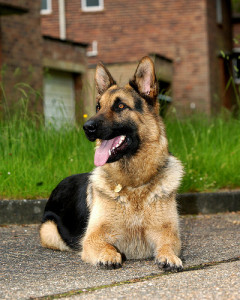Social Media Handbook for Police: Part 7
Welcome to the the next installment in my series of social media tips. These are aimed primarily at a police audience, but hopefully applicable to a wider group of people too, especially those in the public sector. This series of posts will aim to identify some good practice and useful hints and tips for police officers and staff to consider when using social media.
Part 7: Basic Guides – Twitter and Flick’r
Part A Twitter
What is it?
A real-time, social networking website that allows users to send and read messages – known as tweets – of up to 140 characters. These messages can be on anything a user wants – from the pointless and inane, to breaking news about world events such as the Tsunami in Japan or the revolutions in the middle east.
Why should the police use it?
People are already using it to talk about local policing issues – just search for your force name and you can see real time public comments and opinions. What some of them are saying about your force might surprise you.
We can use it to engage with a wider audience – the chief constable of Lincolnshire Police has over 500 followers after just a few months, and as our neighbourhood officers and PCSOs start using it for local issues they are able to join in on conversations with people in their local area. These can be about issues the public raise, or about issues we want to raise awareness of.
It is not really any different to having a conversation in the street or at a more traditional engagement event – except it has the potential to reach a far wider audience.
Are there any pitfalls?
As with most things posted on the Internet, once posted it can be very hard to delete them, and it is very easy for others to copy comments very rapidly. If we trust our people however, and genuinely engage in a conversation with the public then there is no reason why this risk cannot be managed.
Finally Twitter is very unforgiving of organisations who use Twitter as just another conduit for press releases. At best these will be ignored, at worst they will be ridiculed. Twitter works best as an online version of a conversation – a two way conversation with other people. Those who have the most success with Twitter engage in conversations naturally, rather than try to preach to others.
Further guidance
For a more detailed guide to Twitter, check out Dave Brigg’s guide on Learning pool.
Part B Flick’r
What is it?
A photo sharing website that users can upload their pictures and videos to. These pictures range from blurry snaps to commercial grade images, and many can be reused for free without breaching copyright.
Why should the police use it?
The public love pictures of police officers and equipment – check out GMP’s Flick’r page for an example of a force using this tool well. Each picture can be grouped into themes (so community engagement, dogs etc) and can have a caption as well (e.g. local police officers carrying out free security checks on garden sheds). The opportunities that allowing access to your image library can bring are only limited by the number and quality of images you have.
Also bear in mind that if you search for royalty free images (under Advanced Search tick the ‘Only search within Creative Commons-licensed content’ box), then there are lots of pictures on pretty much any subject you might want to liven up your presentations etc.
Are there any pitfalls?
People will take images uploaded and use them, even if you reserve copyright. It is important if you are uploading old images that you may have already, that you ensure you hold the copyright for these.
The basic free service allows for a limited number of photos to be uploaded – pay a small fee (currently $24.95 for a year) for the professional service if the limit (about 2 videos and 300MB worth of photos each calendar month) is a problem.
Other users can comment on your photos – this can easily be switched off under You -> Privacy and Permission.
Further guidance
For a more detailed guide to Flick’r, check out CNet’s guide.
This post was previously published on Partrdigej’s blog.
Previous posts from the Social Media Handbook Series:
Part 1: What Social Media networks should I use?
Part 2: How do I get followers / friends ???
Part 3: Policies / Strategies / Guidance??
Part 4: Ten things to have on your page to drive up interest??
Part 5: What to do when things go wrong
Justin Partridge is a senior manager for Lincolnshire Police in England. He also works on Local Policing and Partnerships for the Association of Chief Police Officers (ACPO).
Justin Partridge has worked in the public sector since leaving university, and for the police since 2003. After being one of only three non-sworn staff selected for the prestigious Police Strategic Command Course (for those who aspire to the most senior posts in UK policing), he started working on the national Local Policing and Partnerships area with chief officers from across the UK, and with partners from the Home Office, NPIA, APA and elsewhere.
Justin is passionate about making a difference to people, and see social media and new technologies having a major role in this – especially in policing and the wider public sector. He blogs on a variety of issues, predominantly around police and technology, and can be found on Twitter talking about much the same.





Pingback: Social Media Handbook for Police: Part 12
Pingback: Social Media Handbook for Police: Part 12 | ConnectedCOPS.net
Pingback: Social Media Handbook for Police: Part 9 | ConnectedCOPS.net
Pingback: Social Media Handbook for Police: Part 8 | ConnectedCOPS.net